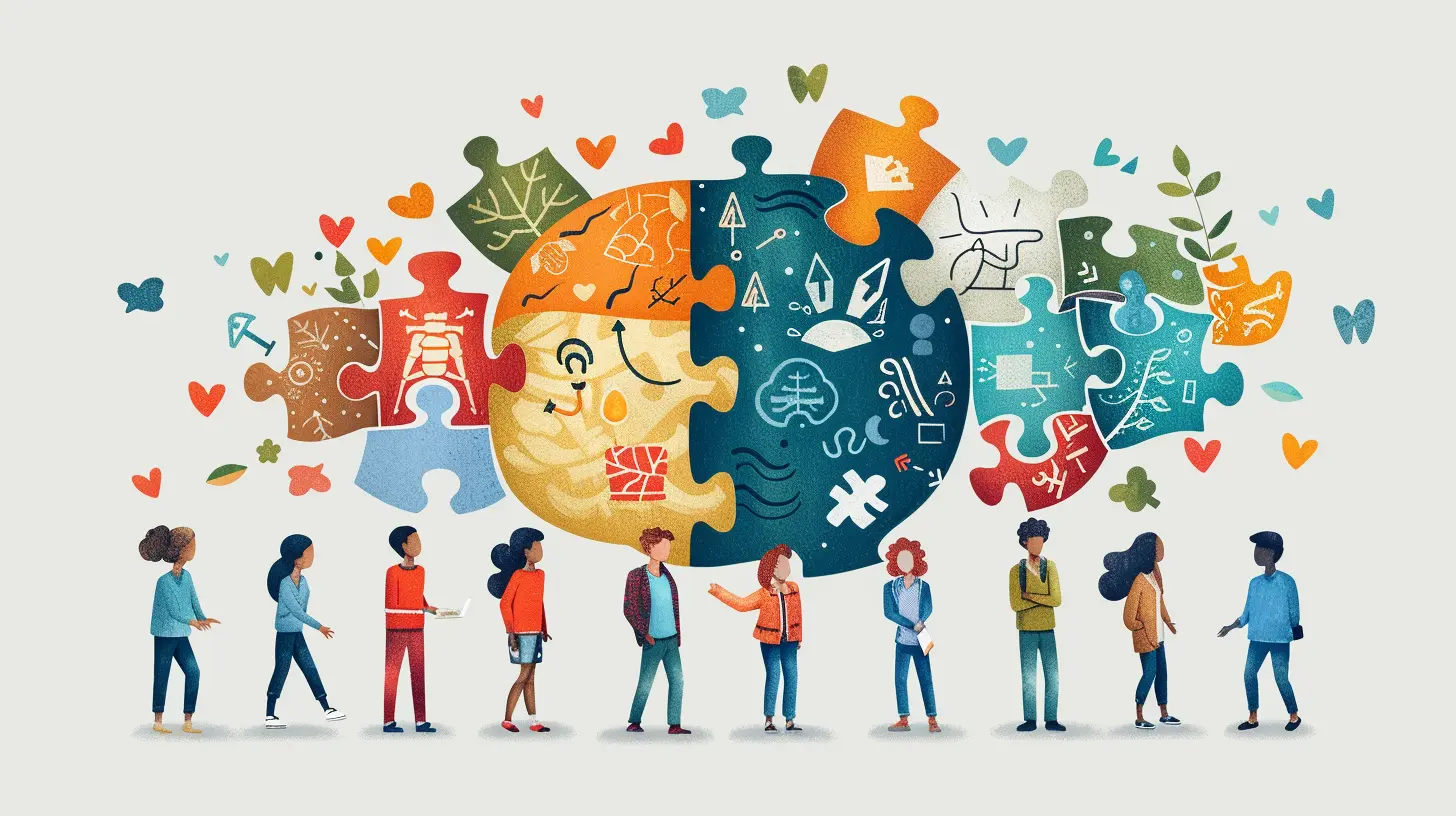Teaching Empathy as Part of the Problem-Solving Process
21 November 2025
Let’s be honest—when most people think about problem-solving, they picture critical thinking, logic, and maybe a bit of creativity thrown into the mix. But there's one superpower that's often overlooked in this equation: empathy.
Yep, empathy. That ability to step into someone else’s shoes, feel what they feel, and truly understand where they're coming from. It's not just a "nice-to-have" anymore. In classrooms, boardrooms, and even living rooms, empathy is becoming a game-changer, especially in how we solve problems.
So, why should we teach empathy as part of the problem-solving process? And more importantly, how do we do it effectively, especially in educational settings?
Let’s break it down.
Why Empathy Matters in Problem-Solving
Imagine you’re on a team tasked with redesigning a school cafeteria menu. You could simply crunch nutrition numbers, costs, and logistics. But what if you never ask the students what they want? You might end up with a healthy, budget-friendly menu... that no one wants to eat.Empathy flips that. It asks: Who is affected by this problem, and how do they feel?
Empathy doesn’t just help us solve problems better—it helps us solve the right problems.
The Human Side of Every Problem
Every challenge, whether it's bullying at school or climate change on a global scale, affects people. When we ignore the human side, our solutions may miss the mark entirely.Empathy ensures that we’re not just fixing technical issues—we’re making life genuinely better for people. And that, my friend, is the whole point of problem-solving.
The Link Between Empathy and Critical Thinking
At first glance, empathy and critical thinking might seem like opposites.Critical thinking is about being objective, rational, almost robotic in how we assess facts and solutions. Empathy? That’s all feelings, emotions, and intuition... right?
Well, not quite.
Two Sides of the Same Brain
Think of empathy and critical thinking like peanut butter and jelly. They’re very different, but when you put them together? Magic.Empathy brings context and depth to our reasoning. It forces us to ask questions that a purely logical approach would miss. For example:
- How will this impact different groups of people?
- What emotional consequences could this solution have?
- Is this actually solving their problem or what we think their problem is?
Teaching students to combine both is like giving them a GPS instead of just a compass. They now know where they’re going and why it matters.
Why Schools Need to Step In
If we’re serious about preparing students for life—not just tests—we’ve got to help them grow into empathetic problem-solvers.The Classroom as a Safe Testing Ground
Teaching empathy as part of problem-solving doesn’t mean turning every lesson into a group therapy session. It’s about helping students practice emotional intelligence as they tackle real challenges.Imagine working on a group science project. There’s always that one student who doesn’t pull their weight, right?
Instead of jumping to blame, what if the group paused, asked questions, and tried to understand why? Maybe that student is struggling at home, or doesn’t understand the material. That switch in mindset—from irritation to empathy—can transform not just the group dynamic, but the outcome of the project itself.
Strategies for Teaching Empathy in Problem-Solving
Now that we're on the same page about why empathy matters, let’s talk about how to actually teach it.No, you don’t need a degree in psychology. You just need a willingness to listen, ask questions, and encourage reflection.
1. Start with Stories
Humans are wired for stories. We remember them more than facts. We connect emotionally with characters. Use this to your advantage.In both literature and real-world case studies, challenge students to analyze not just what happens, but how the characters feel and why they made certain choices.
Ask them:
- What would you do in that situation?
- Can you relate to this person’s experience?
- What might they be thinking or fearing right now?
Stories are empathy machines.
2. Role-Playing and Simulations
Want to supercharge empathy? Get students to embody someone else.Create simulations where they play different stakeholders. Maybe one group is city planners, another is residents, and another is environmental activists. Their job? Find a solution together.
When students "live" someone else’s life, even just for a class period, their perspective shifts.
3. Reflective Journaling
After a group project or classroom conflict, have students reflect on how they felt, how others might’ve felt, and what they’d do differently next time.Reflection turns experiences into lessons.
Plus, it’s a low-stakes way for quieter students to explore emotions and thoughts that they might not share out loud.
4. Incorporate Social-Emotional Learning (SEL)
If your school has an SEL framework, empathy is already a key pillar. Tie it directly into problem-solving exercises.Connect emotions with actions. When students understand how people feel, they begin to see why they react the way they do. From there, they can figure out what solutions are most compassionate and effective.
5. Use Real-World Problems
The bigger the stakes, the more empathy matters.Challenge students with real-world problems—like homelessness, immigration, or digital privacy. Encourage research that includes interviews, articles, and multimedia content created by those directly impacted.
Ask:
- Who is affected?
- What do they need?
- How can we help them—not just fix the problem, but support them as people?
When Empathy is Missing: Real Risks
Let’s flip the script for a second.What happens when we don’t teach empathy?
Solutions That Hurt More Than Help
History is full of examples where well-intentioned solutions made things worse because the people behind them lacked empathy.A school policy meant to curb bullying can turn into a student surveillance nightmare. A public health campaign can alienate the very communities it hoped to protect. Without empathy, even the most data-driven solutions can backfire.
Broken Relationships and Burnout
In group work, a lack of empathy creates resentment. In leadership, it causes disengagement. In society, it fuels division.Empathy is the glue that keeps problem-solvers—and the people they’re trying to help—connected.
Empathy in the Era of AI and Automation
Here's a curveball. In a world increasingly run by algorithms, empathy is one of the last frontiers of truly human problem-solving.Computers can analyze patterns and optimize systems. But can they understand the grief of a single mother working three jobs? Or the fear of a teenager struggling with identity?
Probably not.
That’s where we come in.
We need to teach the next generation to be empathetic not in spite of technology, but because of it. Because the more technology handles the logic, the more humans need to bring the heart.
Building a Culture of Empathy in Schools
We can't just sprinkle empathy into one lesson and call it a day. For it to be a meaningful part of the problem-solving process, it needs to be baked into school culture.Teachers as Role Models
Students learn by watching as much as doing. When teachers model empathetic responses—whether to a student struggling with homework or a peer in conflict—it sends a powerful message.Show you're listening. Ask questions. Validate feelings. It’s okay not to have all the answers. Sometimes, just acknowledging someone’s struggle is enough.
Reward Thoughtful Problem-Solving
Instead of always grading the “right” answer, reward students for asking thoughtful questions and considering multiple perspectives. Celebrate those “aha” moments where empathy clearly shaped the outcome.This builds intrinsic motivation to think beyond the obvious solutions.
Normalize Vulnerability
Create an environment where it’s okay to share emotions and admit mistakes. When empathy is normalized, students feel safer being themselves—and they’re more willing to understand others in return.Final Thoughts: Empathy Isn’t an Accessory—It’s a Game-Changer
Teaching empathy isn't fluff. It’s not a trend or a buzzword.It’s foundational to solving problems in a way that’s sustainable, inclusive, and, well... human.
In the classroom, in the workplace, and in the world at large, empathy fuels understanding—and understanding fuels better solutions.
So the next time your students dive into a project or debate a tough issue, don’t just ask what the answer is.
Ask them who’s at the heart of the problem.
Because in the long run, the problems we face won’t just be solved by smarter brains. They’ll be solved by kinder hearts.
all images in this post were generated using AI tools
Category:
Problem SolvingAuthor:

Monica O`Neal

